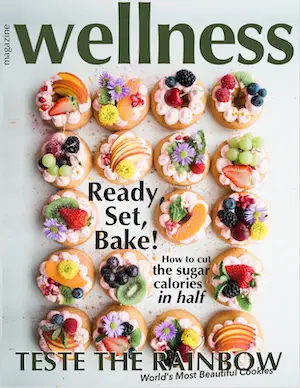One quality I like most about myself is how much I enjoy being a vegetarian. I have abstained from eating meat for more than 35 years and have loved every minute of it. If you walked into my kitchen unannounced, you would, without a doubt, see lots of organic fruits and vegetables in my refrigerator, with choices constantly changing depending on the time of year. You would also find a cake of tofu out of its container, completely immersed in a bowl of fresh water, ready for use in a new recipe.

Peering into my pantry reveals a variety of organic canned beans, bags of organic brown rice, wild rice, basmati rice, millet, barley, rolled oats, whole wheat flour, and jars full of nuts and seeds. With these simple ingredients, I have been feeding my friends and family for decades now, the most delicious, healthy food possible on earth. As a result of this way of cooking, I have been helping to reduce global warming, and let me share how you can contribute more positively for helping the environment as well as your waistline.
It has been an amazing experience for me to see how the vegetarian way of life has become more and more popular with time. Most of you have heard how eating foods from the plant kingdom can bring good health by lowering cholesterol levels, decreasing blood pressure, assisting with weight loss and helping to fight cancer. Colossal amounts of research demonstrate the connection between a vegetarian diet and good health. This information has motivated many people to change their eating habits. Recently, well-known chefs on TV are cooking their own gourmet, vegetarian creations. Now you can even find vegetarian entrees at the finest restaurants. What used to be considered “too weird” cuisine is now desirable and trendy because of its well-known health benefits. Still, more needs to be learned about the advantages a plant-based diet has over an animal-based diet.
As the concern over global warming ignites our imagination, many experts warn us about impending catastrophes. Whether global warming is manmade or not, we need to take better care of our environment. We all know our planet is facing serious problems. Scientists and politicians offer answers by pointing fingers at those who they think are at fault. Countries criticize each other for not doing enough. It’s all a blame game and no one is taking any real responsibility. Yet, there is a way of helping Mother Earth in which each and everyone one of us can participate.
Basing our diet on foods from the plant kingdom creates a very earth-friendly chain of events that would decrease pollution, save on energy usage, revitalize our soil, and clean up our waterways. Plant foods use a lot less energy to grow and do not cause the kind of pollution created by raising livestock for food. When choosing what to eat for your next meal, you are either helping or hindering our environment. The answer, my friends, is what you put in your kitchen cupboard.
For me, food has led me through a wonderful process of personal transformation. My first encounter with vegetarian food took place when I was a sophomore in college back in the late 60’s. A friend invited me to attend a yoga class, relatively unknown back then. Once the class started and I assumed my first yoga posture, I knew that I was “home.” My whole life changed at that instant. Practicing Hatha yoga became a daily ritual, as did eating the yogic diet, my first encounter with vegetarian food. I became a vegetarian for spiritual reasons, and I felt great of sound body and mind. My new way of eating was delicious and intriguing.
A vegetarian system, the yogic diet (relating to the practice of yoga) emphasizes the effect that food can have on your mind. Foods to avoid include those that can over stimulate as well as those that can dull the mind and make you feel tired. The goal is to choose foods that calm the mind such as from fruits, nuts, seeds, vegetables, grains, and dairy. Homemade yogurt, combined with nuts and berries and sweetened with honey, is a typical breakfast.
Obsessed with learning all I could about vegetarianism, I read constantly and tried out recipes. I read about vegetarians and their longevity, vegetarian cultures throughout the world, and about famous vegetarians throughout the ages. I then realized the connection between good health and a meatless diet.
Vegetarianism means different things to different people. All vegetarians eat more foods derived from plants than from animals. Some like to consume dairy and eggs while others even skip the eggs. Some abstain from all animal foods. Vegetarians can be divided further by the way they cook food (some eating only raw foods), or by the way they combine meals (such as not mixing proteins with carbohydrates). It can go on and on, but I think you get the idea.
Going to vegetarian restaurants was a favorite pastime when my husband, Richie, and I lived in New York. A small, macrobiotic eatery called The Cauldron offered delicious apple butter desserts, making it one of our favorite destinations. After buying a Zen Macrobiotic cookbook, I was hooked. Based on Asian cuisine, the macrobiotic diet is about eating lots of brown rice, miso (a fermented soybean paste used to make the well-known soup), tofu, and seaweed. Macrobiotics exploded on the scene in the 1970’s with the publication of Recalled by Life by Dr. Anthony Sattilaro who claimed that he was cured of prostate cancer by following this diet. I became macrobiotic and years later, I even cooked for Dr. Satillaro, but that is a story for another time.
Next came my Maine phase. Richie and I moved to the country and lived close to the earth. We built our own house with all kinds of homemade, ingenious energy conservation inventions. In the mid-70’s conserving energy was not as popular as it is today. My pride and joy was our organic garden. I lost track of time in my garden. Going out to the field and working with the soil, planting seeds and nurturing plants that would later feed us was a very powerful experience. I made my own pickles from the cucumbers first planted in the springtime. Tomatoes harvested in late fall became tomato sauce that lasted all year long.
We were totally immersed in the concept of eating food that was grown in a way that would not harm the earth. Lots of the locals made fun of our way of farming because we never poisoned Mother Nature. We fertilized with manure and not the toxic chemicals most farmers used and we never, never used pesticides. Clearly, we understood, conventional agricultural methods were harmful to the earth, to farmers and to consumers. Organic was the way to go.
Later on in the early 80’s we moved to Florida and opened the Bread of Life Natural Food Market. I gave lots of talks on nutrition and vegetarian cooking classes. Many of the women who attended my classes were very concerned about their teenage children who had suddenly stopped eating meat. For them, eating meat meant being cruel to animals. I started teaching a new generation of vegetarians how to eat right while being compassionate to animals. Together, we cooked tofu lasagna, nut loaves, and stir-fried vegetables.
Currently, I find myself speaking in favor of vegetarianism once again, but for a slightly different reason. It makes so much sense to me that if you want to help Mother Earth recover, then you may want to eat less meat and more plants instead. Global warming, climate change, polluted land, toxic waterways, deforestation, and dependency on foreign oil are serious environmental issues that can be alleviated by just changing the way we eat. A meat-centered society wastes a lot of energy and resources. Most of the agricultural land in the U.S. is planted to feed livestock, not the best use for our land. For every 16 pounds of grain and soybeans fed to beef cattle, we get one pound of meat to eat. People can directly consume these grains and beans. If Americans were to reduce their consumption of meat products by about 10 percent, this would free about 12 million tons of grain for human consumption.
One of the main reasons deforestation is taking place is because more and more land is needed for grazing and feeding livestock. In addition, grazing livestock are the culprits in the loss of our topsoil, the nutrient rich soil so important for healthy plants. Think about our delicate and limited water supply. Over half the water consumed in the U.S. goes to irrigate land growing feed for livestock. To produce one pound of meat takes 2500 gallons of water, the same amount family of four uses in one month. Waterways are polluted by the animal waste dumped in our rivers, lakes, and streams.
Fossil fuels used in producing meat exceed the amounts used for growing grains, legumes, fruits, and vegetables. Animals raised for feed need to be kept in temperature controlled quarters all year long. This takes a lot of energy. Fuel is used also in transporting the animals, in removing wastes, and in harvesting all that feed. Of course, fossil fuels are also used in growing vegetables, but a lot less is needed.
I am sure you have heard the joke about a cow belching and causing global warming. It’s really no joke. It is true that livestock animals produce a lot of methane gas when they belch and excrete. About 20 percent of global methane emissions come from these animals. Methane gas just happens to be one of the most potent greenhouse gases – at least 24 times more potent than carbon dioxide emissions.
You can see how beneficial it would be if as a society that we change our system of eating toward less dependency on animal food. May I suggest that you think about the food choices you make every day? I am not suggesting that you become a total vegetarian but that you think about reducing your intake of animal foods. It may help improve your health and the health of Planet Earth.
________
Julie Gerber, M.Ed., is a Licensed Nutrition Counselor. A health and wellness columnist, Julie is vice president of marketing at BeeCeuticals Organics, a natural body care company.



